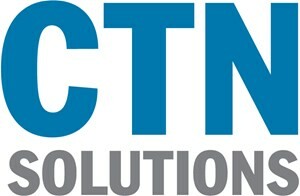The Novel Coronavirus has made its way around the world and it has certainly changed the way a lot of business leaders’ decisions. Some businesses have put in some type of disaster recovery platform. This is basically a plan for returning to continuity after some type of disaster, but we are seeing that many business continuity plans were not broad enough to take on a worldwide pandemic. Sadly, many of these businesses won’t open again.
Disaster Recovery Defined
Disaster recovery is one of the most important aspects of a business continuity plan. It is the assignment of disaster-related tasks, the coordination of the business to respond to a disaster, and ultimately, the plan that dictates how operations will continue as the event passes. In turn, there is much planning required to successfully keep continuity, after a disaster.
Here are a list of disasters you should be cognizant of:
- Natural disaster – Flood, hurricane, tornado, wildfire, electrical storm, worldwide pandemic; the list goes on and on.
- Human error – Accidental, negligent, or deliberate situation an employee puts the business in which causes a disaster-like result.
- Cyberattack – Data breaches can be some of the worst, especially when people’s sensitive information is involved.
- Failing Hardware – If the right component goes out at the right time it can have devastating effects on your business.
Regardless of what ails your business, getting back up and running as quick as possible ensures that you aren’t going to be in trouble. Even the most forward-thinking business can only sustain operational integrity for a short period of time when revenue is obstructed. That’s why you need to have a plan to enact in case your business deals with any of the above problems.
DR From the Beginning
Many pundits are suggesting that the Coronavirus outbreak will result in better business continuity and disaster recovery strategies. As mentioned briefly above, lots of businesses didn’t have a disaster recovery plan in place for the suspension of business; and, while there is going to be a lot of money invested to help businesses that didn’t have a great plan, for some businesses this thing has blind-sided them into oblivion.
Let’s start at the beginning. A disaster recovery platform is necessary because it’s not if you are going to need it, but when. When the time comes, a comprehensive plan will put you in a very positive minority. Three-out-of-five businesses that experience a prolonged system outage will be out of business within two years of the event. That means that even if you are able to pick up the pieces and begin to operate, it will never be normal and your business has a 60 percent chance of failing.
Knowing that, it’s a bit ironic that the first suggestion after a disaster is that you need to stay calm. You are going to want to act fast, but if you are the kind of person that makes impulsive moves without following a plan, it could actually keep your plan from working at all. Take a minute to take a look at where all the variables are in relation to normal to get your bearings and you can start from there. Level heads make better decisions.
Speaking of decisions, the first real action is to notify the people that need to be notified. You should set up a hierarchy of people who have the responsibility to notify department managers who will, in turn, notify their subordinates. Communication is certainly important in perilous times.
You will need to have a digital copy of everything. If you can’t afford that, identify the critical systems and digitize them. That’s where the BDR (Backup and Disaster Recovery device) comes into play. By having a reliable backup stored in the cloud, you have a great chance to get up and running fast, even if the disaster has destroyed your hardware.
You will need to find alternative routes to get work done. Having a remote connection policy as part of your DR platform is certainly helpful to get your operations back up and running quickly. You can also have a contingency to move to another location if you don’t believe that you can be profitable with people working from home, but it will cost a whole lot more and it’s been proven that, by-in-large, people are as productive from home as they are in the office.
Regardless of what your plan is, you will want to ensure that your IT systems are up and running and your data and applications are accessible. Your business continuity plan will dictate how most other issues are handled. Disaster recovery is all about getting back after any type of interruption. So while the scale of your normal disaster may not reach the level of the past two months, you will have a recovery strategy in place and ready.
If you would like help with your disaster recovery platform, reach out to the IT professionals at CTN Solutions today at (610) 828- 5500.
